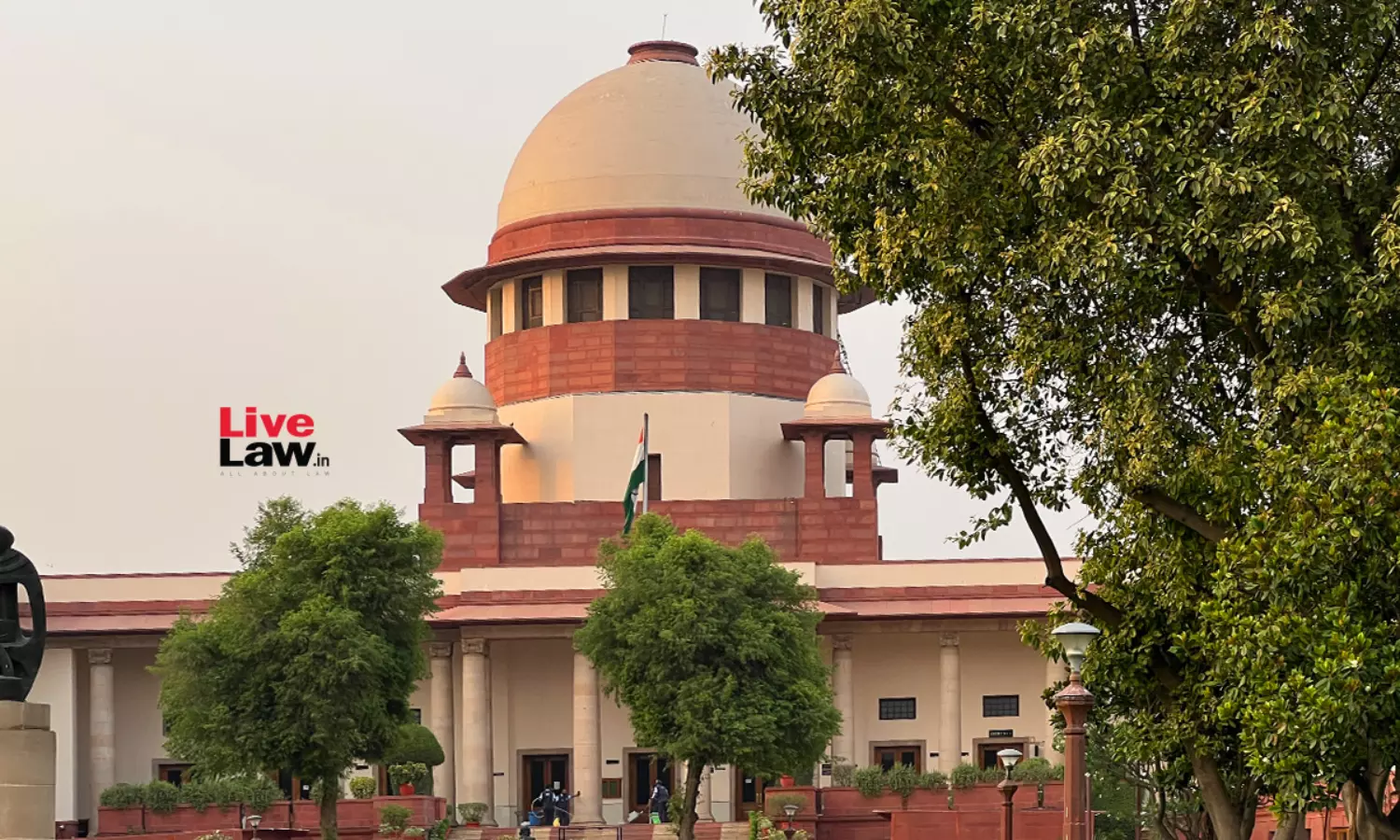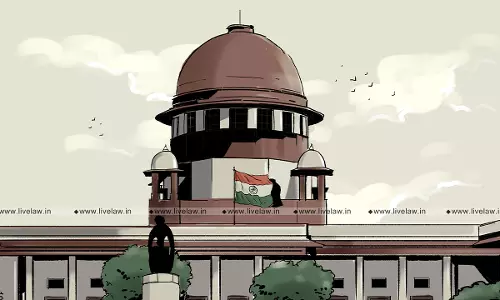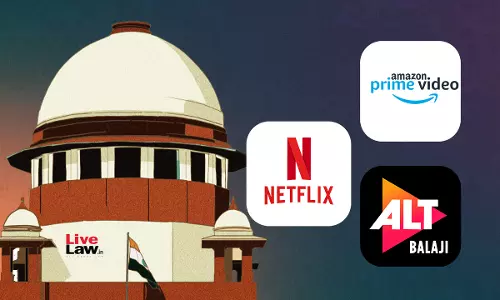If Circumstances Warrant, A Judge, Wrongly Appointed, Does Not Become Immune From Action: Supreme Court In 2008

As the Supreme Court is set to hear petitions challenging the appointment of L.Victoria Gowri as a Judge of the Madras High Court today, it has to come to terms with its own judgment, delivered in 2008 with respect to the appointment of another Judge of the Madras High Court, which was under challenge then. In Shanti Bhushan and Another vs Union of India, Justices Arijit Pasayat...
As the Supreme Court is set to hear petitions challenging the appointment of L.Victoria Gowri as a Judge of the Madras High Court today, it has to come to terms with its own judgment, delivered in 2008 with respect to the appointment of another Judge of the Madras High Court, which was under challenge then.
In Shanti Bhushan and Another vs Union of India, Justices Arijit Pasayat and Dr.Mukundakam Sharma, petitioners had alleged that the late Justice Ashok Kumar of the Madras High Court was appointed as a permanent Judge on February 2, 2007, and sworn in as a permanent Judge on February 3, 2007, without consulting the then Supreme Court Collegium, comprising the Chief Justice of India, and two senior-most puisne judges. Justice Ashok Kumar passed away in October 2009. The CJI was also expected to consult, according to the norms laid down in the Second and Third Judges cases, some other Judges of the Supreme Court who were conversant with the affairs of the Madras High Court, but he didn’t.
The Union Government had told the Supreme Court in this case that a total of 350 Additional Judges were appointed as permanent Judges during the period from 1.1.1999 to 31.7.2007 by successive CJIs, who had not consulted the Collegium while considering the cases of appointment of Additional Judges as Permanent Judges of the High Courts although the Collegium was consulted at the stage of the initial appointment as Additional Judge.
The Government submitted that in view of the practice followed while implementing the memorandum the Government being once satisfied that a suitable candidate was in fact appointed as an Additional Judge of the High Court, elaborate consultations as required for forming the opinion for appointment of an Additional Judge might not have been considered necessary while considering the case for appointment as permanent judge.
The Government claimed that there was a presumption that a person found suitable for appointment as an Additional Judge continued to be suitable for appointment as a Permanent Judge, except when circumstances or events arise which bear adversely on the mental and physical capacity, character and integrity or other matters rendering it unwise to appoint him as a permanent Judge. “There must be relevant and pertinent material to sufficiently convince a reasonable mind that the person is no longer suitable to fill the high office of a Judge and has forfeited his right to be considered for appointment”, the Union Government had told the court.
The Supreme Court held in this case that though there is no right of automatic extension or appointment as a permanent judge, the same has to be decided on the touchstone of fitness and suitability (physical, intellectual and moral). “The weightage required to be given cannot be lost sight of”, the bench noted. The bench held that the petitioners’ plea that without consultation with the Collegium, the opinion of the Chief Justice of India is not legal, (in the appointment of a permanent Judge of a High Court, after the initial appointment as Additional Judge) cannot be sustained.
But the bench found considerable substance in the plea of the petitioners that a person who is not found suitable for being appointed as a permanent judge, should not be given extension as an Additional Judge unless the same is occasioned because of non-availability of the vacancy. The bench agreed with the petitioners that if a person is unsuitable to be considered for appointment as a permanent Judge because of circumstances and events which bear adversely on the mental and physical capacity, character and integrity or other relevant matters rendering it unwise for appointing him as a permanent Judge, same yardstick has to be followed while considering whether any extension is to be given to him as an Additional Judge. The bench made it clear that a person who is functioning as an Additional Judge cannot be considered in such circumstances for re-appointment as an Additional Judge. If the factors which render him unsuitable for appointment as a permanent judge exist, it would not only be improper but also undesirable to continue him as an Additional Judge.
Justice Ashok Kumar’s tenure as Additonal Judge was first extended for a period of four months along with seven other Additional Judges. On July 27, 2005, when seven of them were appointed as permanent Judges, Justice Ashok Kumar’s term as Additional Judge was extended by one year with effect from August 3, 2005. On August 3, 2006, it was again extended for a period of six months. All the three members of the collegium including the then CJI opposed Justice Ashok Kumar’s appointment as a permanent Judge.
When the petitioners challenged the repeated extensions given to Justice Ashok Kumar as Additional Judge, despite his unsuitability as a permanent Judge, Justice Pasayat, who authored the judgment, wrote that the belated challenge to such extensions cannot put the clock back.
“Since it is crystal clear that the Judges are not concerned with any political angle if there by any in the matter of appointment as Additional Judge or Permanent Judge, the then Chief Justice should have stuck to the view expressed by the collegium, and should not have been swayed by the views of the government to recommend extension of the term of respondent No.2 (Justice Ashok Kumar) for one year; as it amounts to surrender of primacy by jugglery of words”, Justice Pasayat wrote in his judgment.
The bench noted that Justice Ashok Kumar was due to retire on July 9, 2009. The bench observed that as there was no challenge when his term as an Additional Judge was extended repeatedly for over two years, the clock could not be put back.
The bench, however, distinguished the peculiar circumstances of the case from the general principles which ought to govern appointments. “...we have no hesitation in saying that a person who is not suitable to be appointed as a permanent judge on the ground of unsuitability due to adverse factors on account of mental and physical capacity, adverse materials relating to character and integrity and other relevant matters, which are so paramount and sacrosanct for the functioning as a Judge, should not be continued as an Additional Judge. Even when an additional Judge is appointed as a permanent Judge, he does not become immune from action, if circumstances so warrant. Whenever materials are brought to the notice of the Chief Justice of India about lack of mental and physical capacity, character and integrity, it is for him to adopt such modalities which according to him would be relevant for taking a decision in the matter”, Justice Pasayat held in his judgment.
The bench noted that Justice Ashok Kumar had been, in the meantime, transferred to Andhra Pradesh High Court in public interest. The bench hoped that the CJI would take appropriate action against him, if any aberration while functioning as a Judge came to his notice.
In 2014, the former Supreme Court Judge Markandey Katju stirred a storm when he posted shocking revelations on Facebook, regarding the conduct of three former Chief Justices of India, the late R.C. Lahoti, the late Justice Y.K.Sabharwal and Justice K.G. Balakrishnan in granting extension and confirming Justice Ashok Kumar.
Thus while the Supreme Court did not provide relief to the petitioners in Shanti Bhushan in 2008, it indeed empowered the CJI to take appropriate action against Judges who were not suitable for appointment, whenever any adverse materials are brought to his notice in future. Whether the appointment of Victoria Gowri as a Judge of the Madras High Court is one such occasion, anticipated by the Supreme Court in 2008, is yet to be seen.




